Shooting with a Nikon D70 in the smartphone age
I used to do photography somewhat seriously. I was an amateur, but a reasonably devoted one. In high school I took photos with a Pentax K1000 that my father passed down to me. I shot in color film and dropped rolls to be developed at Elephant Pharmacy (RIP) on my way home from school. I shot in black and white and developed them myself in the Berkeley High School darkroom. In college I bought myself a digital SLR, a Nikon D50, and shot with that for a while.
I lost the photography bug. Other interests pulled me away. I was intimidated by my friends who were better photographers¹. And, eventually, I was twice discouraged by the advent of smartphones: once because there was no longer a role to fill as the person who documented the lives of people around you – everyone does that now – and once because I learned to prefer the convenience of an iPhone to the comparatively beastly D50 and its array of interchangeable lenses.
I’ve been thinking about photography again lately – I’m not sure why. I considered buying a fancy new camera, but discovered that modern mirrorless cameras are pricey². I sometimes have a dabbling spirit when it comes to new hobbies. It didn’t seem wise to sink a bunch of money into this one immediately. I decided to dust off an older DSLR and see if I enjoyed it in 2024.

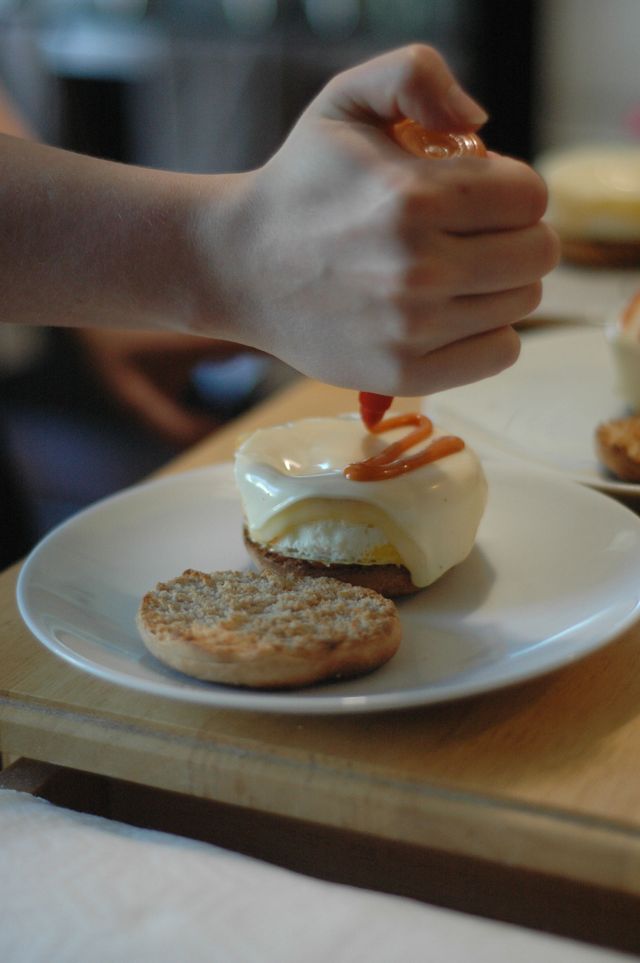
Annaleah applying hot sauce to a breakfast sandwich. Both taken with a Nikon D70.
Instead of my D50, which has sensor issues, I turned to a D70 (a slightly older model) that my mother acquired for free years ago and gifted to me.
This post refers to side-by-side images as “left” and “right” but on mobile they are above and below instead.
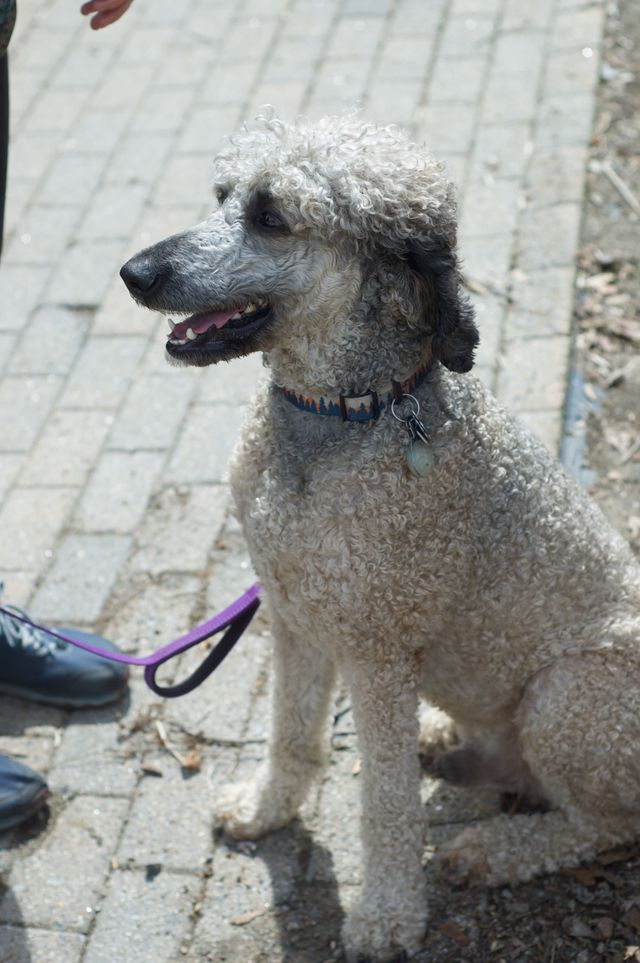
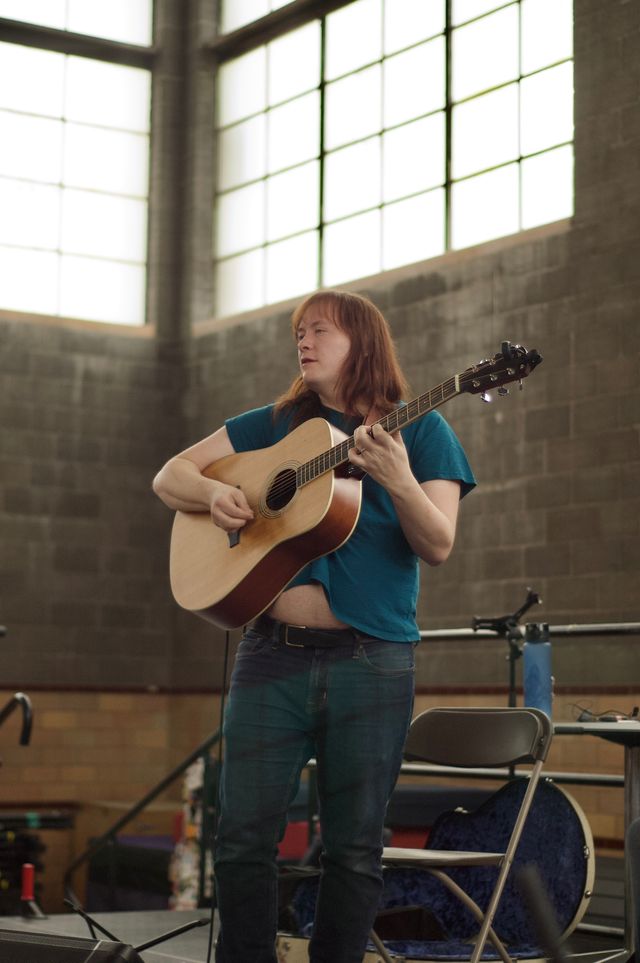
Left: Out for a walk with Basil. Right: Alex Sturbaum playing Dandelion Romp as part of The Engine Room. Both taken with a Nikon D70.
I’m mostly happy with the images I’ve captured on the D70, but it surprised me that they’re not consistently better than the ones I take with my iPhone. They also take a lot more work – though that’s less surprising. I already knew smartphone camera technology had progressed leaps and bounds in the past decade. I hadn’t comprehended how many of those advances improved even beyond DSLRs like the D50 and D70. I took some side by side photos to observe the differences.

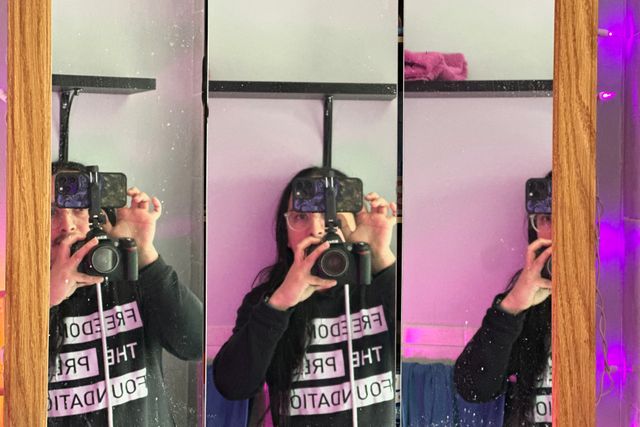
Bathroom selfies showing my apparatus for using both cameras simultaneously. Left: Nikon, Right: iPhone
It’s worth reiterating here that I have never been a particularly expert photographer and it’s been years since my expertise was at its peak. It’s possible I’ve made technical errors or used terms of art incorrectly, though I’ve tried my best. I’ve made color adjustments and cropped to improve the photos and make them more comparable. I’m as amateur at editing as I am at capturing. In practice the D70 images required much more editing to get colors I was happy with.
I wasn’t particularly scientific: I didn’t devise an array of subjects that that would test various factors. I vaguely tried to match shots between cameras but wasn’t super careful. I simply went out and took photos – twice – of whatever caught my eye. I also biased toward circumstances where the D70 shines and I selected images where the competition is closest – this is far from a random sample. The D70 loves bright and outdoor environments and struggles in medium- to low-light scenarios where my iPhone did fine.
iPhone photos are sharper.
In the pictures below – among other differences – you can notice that the grain of the street, the ripples in the puddle, and the texture of the paint on the hydrant are in sharper relief in the iPhone image. Some of this is explained by a focus difference, but not all of it.

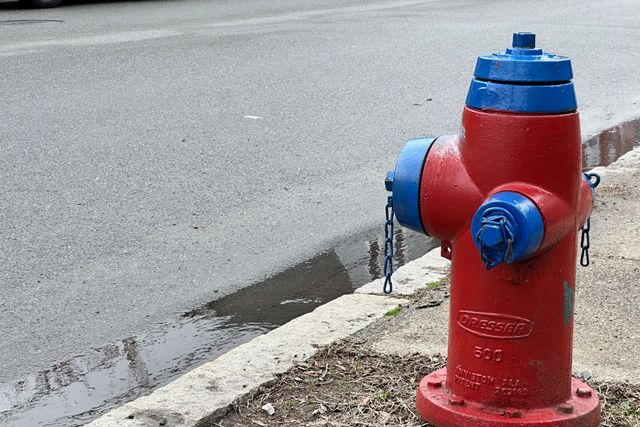
Left: Nikon, Right: iPhone
I’d hypothesize a few reasons for this:
- The iPhone takes photos with 12 megapixels in contrast to the D70’s 6³. The photos are sharper purely as a result of the extra pixels. I assume the sensor, generally, is higher quality.
- The iPhone’s autofocus is better than the D70. It’s faster and more accurate and sports features like prioritizing focus on faces. It also seems to optimize the moment of capture to wait for the sharpest focus.
- Behind the scenes I believe the iPhone does some technology magic taking multiple frames, selecting from them, and recombining them, which I suspect includes some improvements to sharpness.
- The iPhone is better at low-light and mid-light situations (see next item), which forces me to make compromises on the D70 (large aperture, long exposure) that sacrifice crispness.
Initially this seemed straightforwardly like an advantage for the iPhone, but as I’ve spent more time with images from both, purely subjectively, I’ve found that sometimes the sharp way the iPhone captures textures feels aggressive or exaggerated somehow and distracts from other aspects of the image compared to the D70. For example, in the image below, I prefer the soft contrast of the wall texture in the Nikon image that allows the brightly colored bike to pop more.


Left: Nikon, Right: iPhone
The iPhone is better in low-light and even medium-light situations.
The D70 excels in bright light, especially sunlight. In dim light or even standard household evening lighting, I have to bump up exposure time, ISO⁴, and/or aperture size to get a decent picture. (Or use a flash, I suppose, which is what I used to do, but I haven’t broken out my flash this year so far and, anecdotally, I think flash photography is less common and less tolerated than it used to be.)
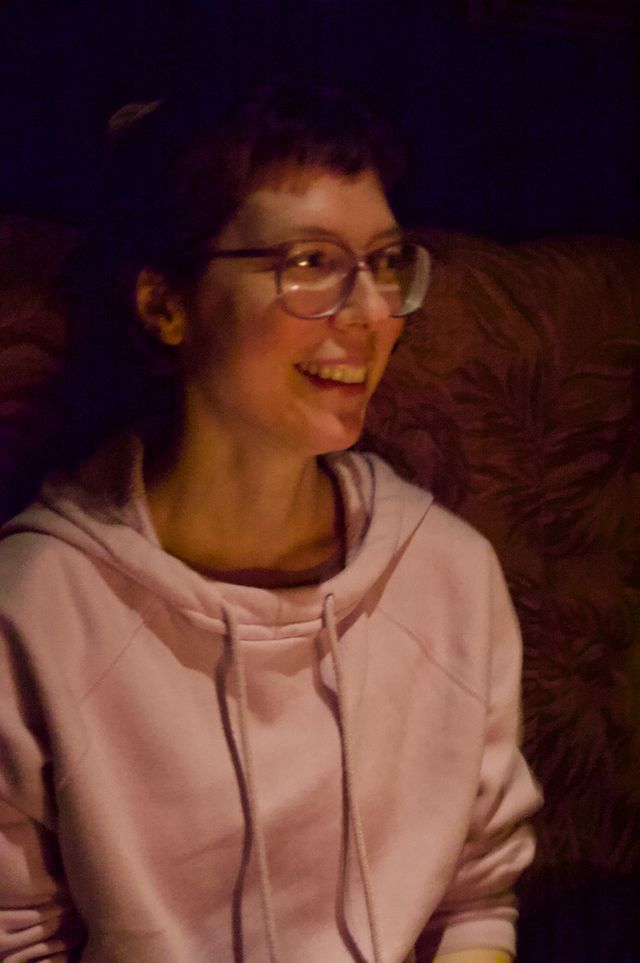
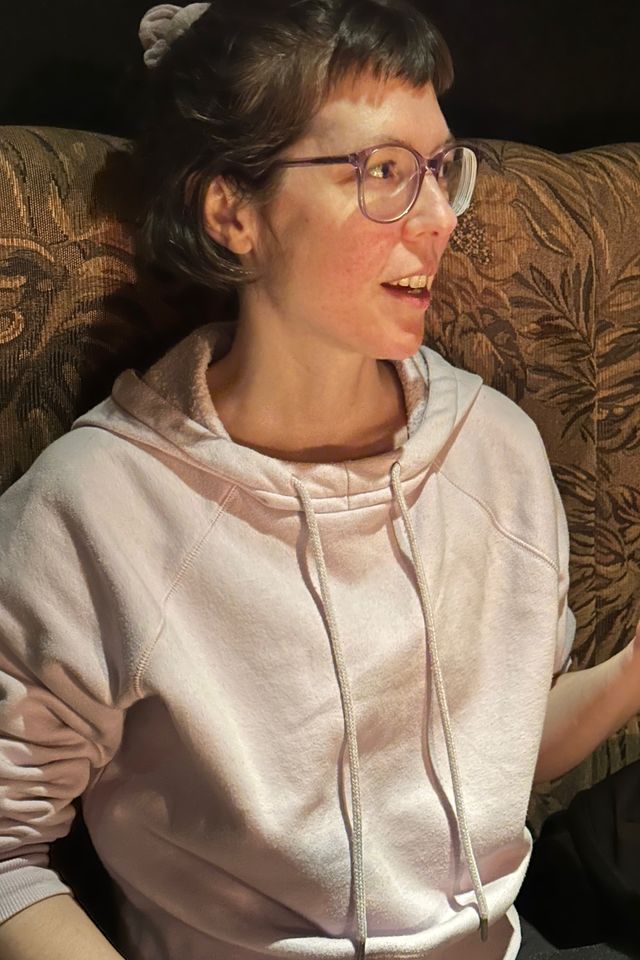
Drinks in a medium-lit bar with Jen. Left: Nikon, Right: iPhone
Both cameras struggle in dim lighting, but the iPhone produces images that are a little sharper and have colors that feel truer-to-life. The D70 image above required a fair bit of processing to get it to this level and, with my current editing skills, I still wasn’t able to get it closer to reality.
Depth of field effects on the D70 are more pronounced and natural.
It’s often desirable in photography to have parts of a scene, particularly the parts that are not the primary subject of the photo, blurry and out of focus. (On the other hand, too much of this can be too much and when poorly controlled can exacerbate the crispness issues above.) This effect is less pronounced on smaller lenses like you might find on an iPhone. The unambiguous strength of even an old SLR against modern phone cameras is more powerful and swappable lenses. The lens I used for most of my Nikon shots is a Nikon 50mm f/1.8 D, which can produce very nice depth of field effects.
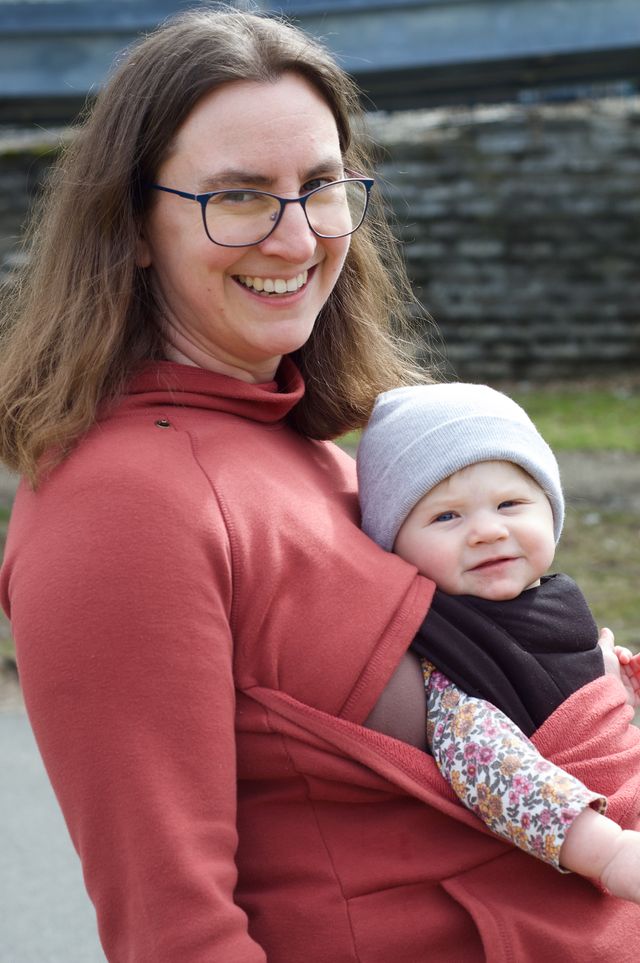
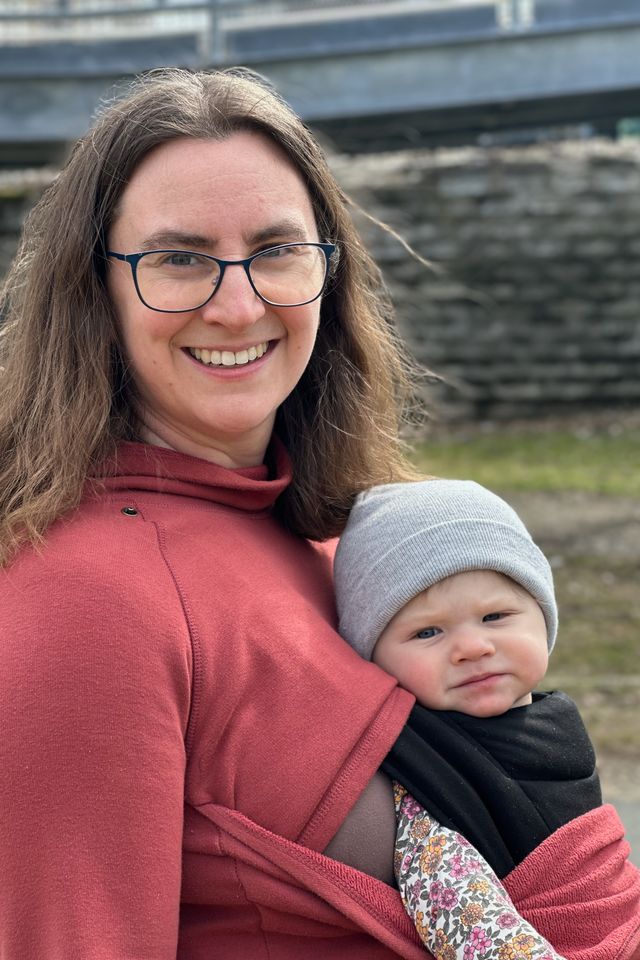
Ruthie and Josephine. Lower f-stop simulated with portrait mode on the iPhone image. Left: Nikon, Right: iPhone
iPhones have a “portrait mode” which is designed to simulate a shallower depth of field than their lenses really produce, but it can’t produce as coarse of a bokeh as a larger camera lens, often has processing artifacts (especially around people’s hair), and looks less natural – because it is less natural; it’s simulated by software rather than the pure optical effect of a lens projecting an image onto a sensor.
In the iPhone version of the photo of Ruthie and Jo above, around the fringes of Ruthie’s hair, some wisps are oddly out of focus and in some places the wall seen through her hair is oddly in focus. Similarly, in the iPhone image of the cherry blossoms below, some blossoms that are the same distance from the lens are in focus and others are out of focus, sometimes sharply cutting from one to the other, rather than a consistent gradient of focus over distance as in the Nikon image.
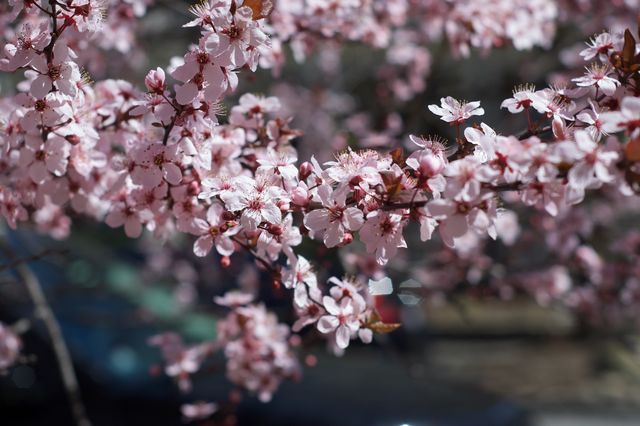

Cherry blossoms. Lower f-stop simulated with portrait mode on the iPhone image. Left: Nikon, Right: iPhone
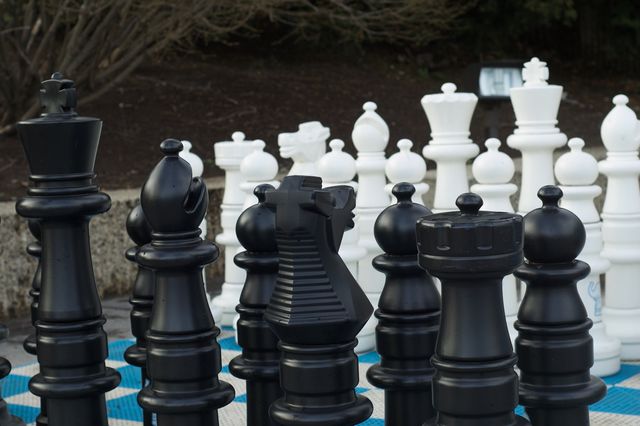

Oversized chess pieces at Tufts. Lower f-stop simulated with portrait mode on the iPhone image. Left: Nikon, Right: iPhone
A few other notes on the experience of shooting with the D70:
- It’s a conspicuous device. It’s much larger than a phone; it’s larger even than a modern mirrorless. It has an internal mirror and shutter apparatus that makes a loud click when it fires. I have to be unapologetic that I am photographing. If I’m trying to at all be discreet, I cannot use it.
- Along similar lines, it requires more effort to pack, carry, and use. Even as small a detail as needing to remove the lens cap makes it a more conscious and deliberate photography experience than the iPhone. I feel, abstractly, like there’s some benefit to this deliberacy, but I can’t articulate offhand what it is.
- Initially I shot using a compressed jpeg format on the D70, but I realized I was losing a lot in quality by not shooting RAW⁵ instead. Apple’s Photos ecosystem handles the raw images relatively well, though it requires some contortions to share them out in a more compatible format.
- In general sharing images has more of a delay. It’s very different from the straight-to-social-media practice of shooting with my phone. I speed it up somewhat from the old days (which involved waiting till I was at a computer to offload photos from the camera) with the use of a card reader that plugs into my iPad and some Shortcuts to convert between Nikon RAW and more shareable formats. Most of the images I’ve posted to Instagram for the past month or so have been taken with the Nikon.
- The battery lasts forever. I’ve been shooting for a few weeks now and I’m finally just seeing a mid-charge indicator instead of high-charge.
I guess it’s no surprise that technology ages. In their heyday DSLRs like the D70 were not only great cameras for hobbyists (and, at higher product tiers, professionals) but they were also the best point-and-shoot cameras available when set to “auto.” A couple decades later, it seems like those same cameras are frequently outpaced by features on the tiny ubiquitous cameras in our pockets.
It got me thinking about the acceleration of technology development and the feeling many of us have that modern technology becomes outdated faster than its predecessors. The more cynical among us attribute this to planned obsolescence, but I’m not so sure. I think it’s possible we do develop larger advances faster than in the past or maybe it’s specific to the technology of this era: sensors, microchips, and software advance more quickly than mechanical parts.
The camera I used before my D50, the Pentax K1000 was first released in 1967 and, though it was discontinued in 1997, it was an incredible camera to shoot with up through the advent of the DSLR era in the 2000s. It may still be an incredible camera – though I haven’t opted to manage the overhead of shooting on film to test it out this year. But when I look at some of the photos I took back then, the effects are unlike any camera or lens I’ve shot with since and in combination with the film grain – it still ignites something in me.

My childhood cat Montana. Taken with a Pentax K1000
Returning to the digital age: there’s still things the Nikon can do that my iPhone can’t. The swappable lenses remain its superpower and even the three lens system on my iPhone can’t achieve the range of effects I can achieve with my 50mm f/1.8 lens alone – as long as I’m willing to apply myself a little. I didn’t play here with the telephoto lens still collecting dust in my closet. Perhaps that will be the subject of a future experiment.
When I was planning this blog post out loud to Ruthie, she neatly summed it up: “The best photo you can take with your Nikon is better than the best photo you can take with you iPhone, but for your average photo, the iPhone is better.”
I’ve been reading recently The Life-Changing Magic of Tidying Up (Marie Kondo) which, if I’m honest, I’m a lot iffier on than I expected to be. There’s at least one passage so far, though, that particularly spoke to me, just on the right side of the “woo” line for my taste:
Every object has a different role to play. Not all clothes have come to you to be worn threadbare. […] When you come across something that you cannot part with, think carefully about its true purpose in your life.
Kondo continues, “You’ll be surprised at how many of the things you possess have already fulfilled their role,” but after consideration, I’m finding the D70 still has a purpose in my life that it hasn’t fulfilled yet. I’ll keep shooting with it for a while – relearning the skills I once had, dialing in for the first time ones I never developed. I have more lenses to experiment with. I got some tips to test for better shooting low light situations from Emily. There’s more to play with.
Eventually, though, if I decide this is a hobby to invest in, I think it will be time for something newer.
Thanks to Emily, Ruthie, and Emma for providing feedback on drafts of this post.
I like to think that, as I’ve matured, I’ve gotten less discouraged by my friends’ overlapping interests – and by them being more skilled! – and learned to lean into sharing the joy of them, humbly seeking advice, and loving to talk shop. ↩︎
I acquired my Nikon D50 for $585 in 2007 – $890 in 2024 bucks, according to the BLS calculator. My understanding is a decent modern mirrorless is $1,000+. ↩︎
The iPhone can actually take up to 48-megapixel images, but I don’t generally use that feature and in my experience those images are not similarly crisp when fully zoomed. ↩︎
In the analog days ISO referred to how dense the photosensitive grains were on the film. Higher ISO values (less dense) capture an image quicker, even in low light, but looks grainier. The mechanics of this in digital cameras are more complicated, but the effect is approximately the same. ↩︎
A format that preserves the data as received by the sensor, without compression. ↩︎